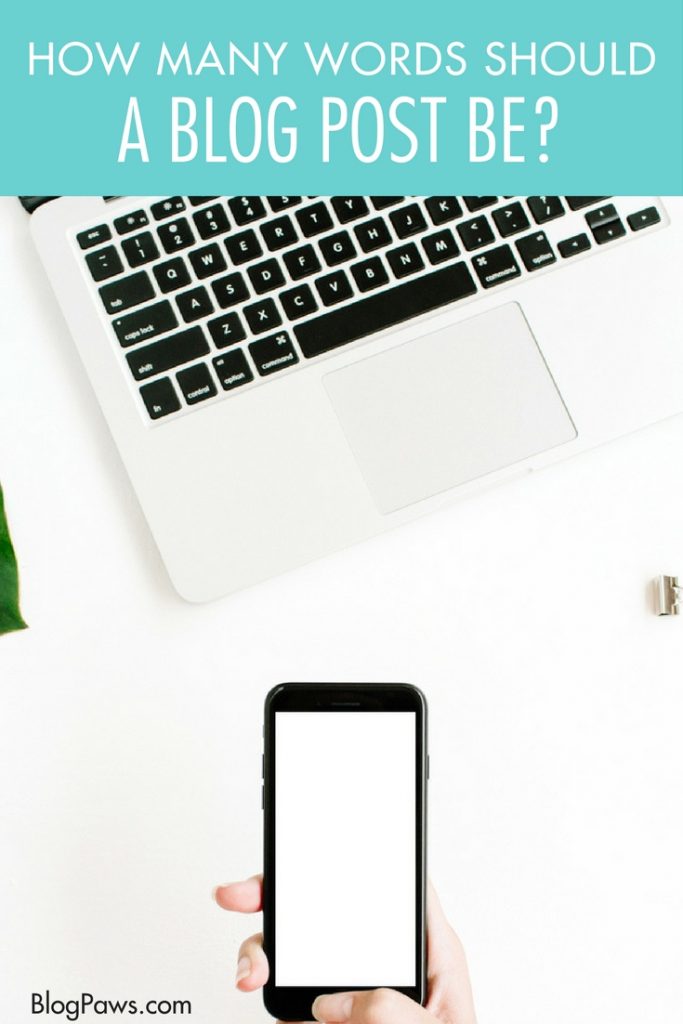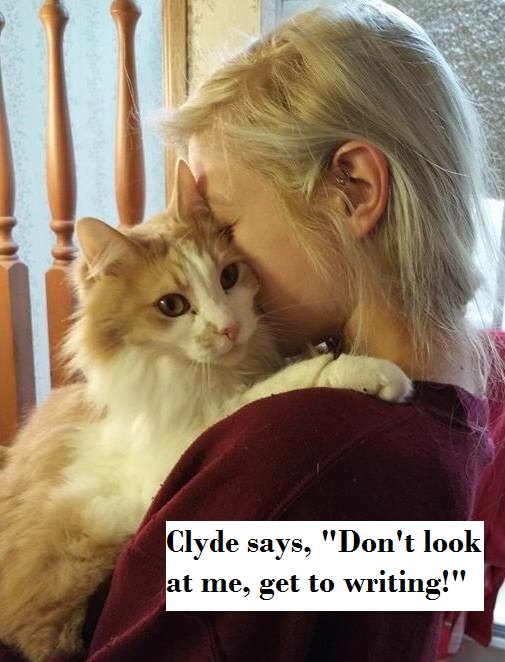How Many Words Should a Blog Post Be?
Blog post word counts matter, but exactly how much?
The folks at Medium say that a seven-minute post captures the most total reading time on average. What does that mean for you, the blogger, and just how many words should a blog post be? It depends, but sometimes size does matter. Keep reading.

Blog Post Word Count Facts
Between 2,032 words and 2,416 words: This is the range of most top-10 Google results according to serpIQ.
Over at HubSpot, about 2,100 words is the ideal blog post length. That number does not apply to every post nor to every niche, but it’s a pretty darned good benchmark from a highly-respected online thought leader.
For Yoast, 300 words minimum is the bottom line in order to rank well in search engines. Posts that are longer generally rank more easily than shorter posts, they say. Long posts mean more time and strong writing skills, right? Yes, but there are exceptions and rules to everything.
Ranking for SEO or Ranking for the Reader? Or both?
Of course, we all want our posts to be found by Google’s algorithm. Some of us may dream of that coveted first page on Google, and when we succeed, oh, how we celebrate.
When you blog, do you write for the SEO rank or your reader? The answer is you need to be ranking and writing for both, and this has a direct impact on the length of a blog post.
At HubSpot, their research shows the ideal blog title length to be 60 characters. If you use the Yoast SEO plug-in, you will get an alert if the title is too long or contains unnecessary words. Sometimes less is more.
The reader ultimately decides whether your post ranks well or not. Being hyper-focused on the length of a post that is less than stellar, poorly written, or isn’t something that your reader is interested in will defeat your purpose.
To rank for SEO and for the reader, there are two core things to keep in mind:
- How well is my content targeted (does it solve a problem, answer a question, help the reader)
- Who is reading the content (who is the audience)
Learn more about how this relates to the images in your post: Optimizing Blog Images for SEO
Anatomy of 2,500 Word Blog Post
When a reader sticks around on your blog post and does so with quality images, video, bulleted information, solid research, and an article that is well constructed and written, Google smiles. SNAP.com says, “You get a lower bounce rate with higher engagement.”
Should each blog post you write be a 2,500 word count or so masterpiece? Not necessarily.

Frequency of Blog Posts
Ah, the second most asked question: How often should I post? Do you have a blogging editorial calendar? Is that blog editorial calendar set up weeks or months in advance? Some bloggers set their content calendars up a year in advance. It’s that whole “at a glance” and “plan ahead” mentality that works for you if you work it.
Example: In the time it takes to post every single day of the workweek (Monday – Friday), are your numbers where you want them? Do your Google Analytics justify the time spent and the expectations you have in place?
What can you do to get the same results, or even better, more traffic, with less work? The answer is strategy and experimentation.
Ninja Tips for Blog Word Count
No blog post on proper word counts should be published without sharing some hidden Easter eggs, aka ninja tips.
Meta Description Matters: That short description that you see under a link when you search is the Meta Description. It tells the reader what the page is about in a preview form, like this:

According to HubSpot, the ideal meta description length is less than 155 characters. Again, the SEO by Yoast plug in analyzes your meta description and provides feedback.
Hook Them on the Way in and Out: You need an enticing start to a blog post but also a strong finish. The Call to Action matters big time! People need to be told what you want them to do. With the average attention span of a reader about 3 seconds (oh, and a goldfish is 9 seconds), a solid, actionable step is needed after the stellar blog post.
Learn how to write a better CTA: How to Successfully Use a Call to Action
Types of Blog Posts
The type of blog post will also help determine its word count. Some examples of blog posts include:
- Checklists
- Infographics
- Interview
- Controversial Topics
- Reviews
- Inspirational Stories
- Frequently Asked Questions
- Time Saving Hacks
- Reviews and How To’s
Each type of post merits its own quantity of words. Personally, I rarely blog with a word count in mind. I do outline and set up my blog post in advance.
It takes the average reader about seven minutes to read 1,600 words. If you want to keep the attention span of someone for seven minutes, you must have quality content broken up into digestible sections with standout images or video.
Find some fresh ideas for quality content: How to Find Blog Post Ideas
Recap Time
Lengthy Posts Need a Recap: That 3-second attention span requires it or you risk losing a reader. I am a scanner in blog posts, are you? Some things that break up text include sub-headers and bullet points. A recap at the end of a post is great for us speed readers and skimmers.
For this post, I would blog something like this:
Blog Word Count Recap
Size does matter, and if you plan to write a 2,500-word blog post, keep in mind:
How Often You Publish: If you publish twice a day and have no staff to help, a 5,000 word daily average might become tedious really fast. Have a blog publishing schedule.
Know Your Reader: You must swoon for a topic, but is it what your readers want? Do keyword research, determine what topics your readers want to learn more about, and then write to that audience and with those subjects in mind. After all, 2,500 words of blah blah blah won’t rank very high anyways.
Question: Does word count matter to you? Do you plan ahead for how many words a blog post will contain? Let us know in the comments below.
Carol Bryant is the Marketing and Social Media Manager for BlogPaws and runs her own dog blog, Fidose of Reality and its fundraising arm, Wigglebutt Warriors. When not busy playing with her Cocker Spaniel, Dexter, she stays far away from cooking. Her trademark is her mantra and is tattooed on her arm: My Heart Beats Dog.®
Images: Floral Deco / GaudiLab /Shutterstock.com




